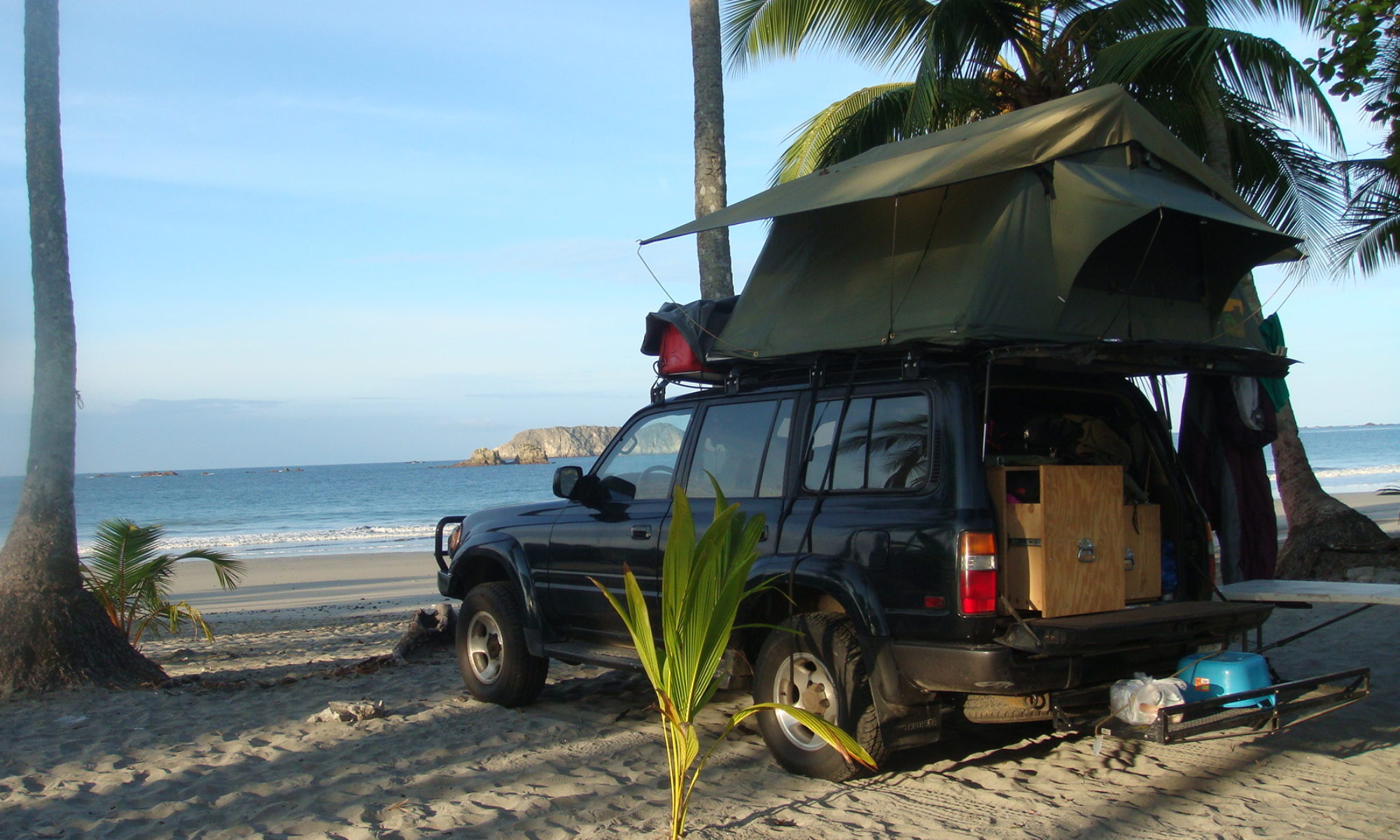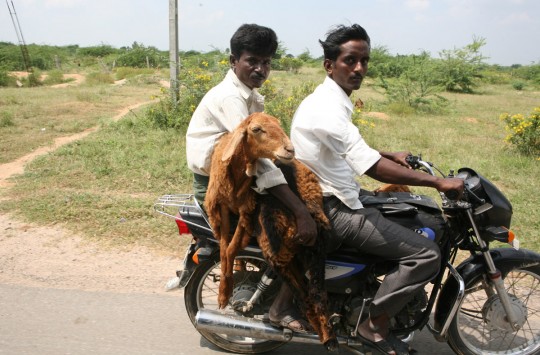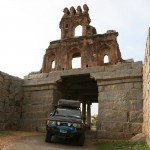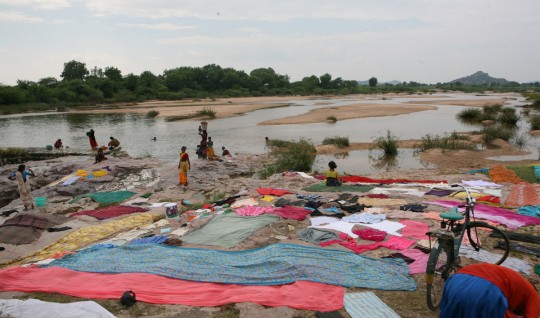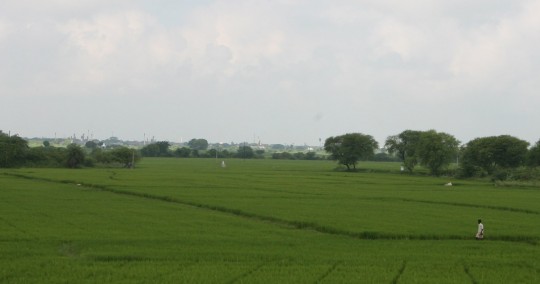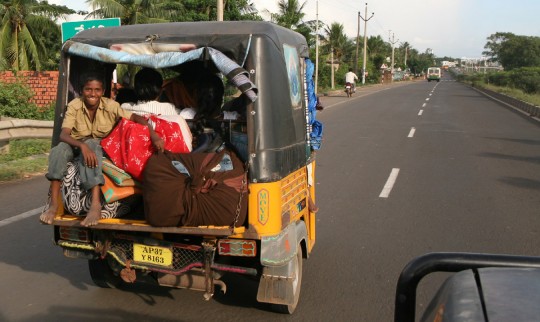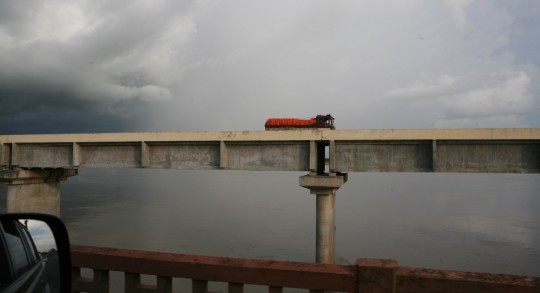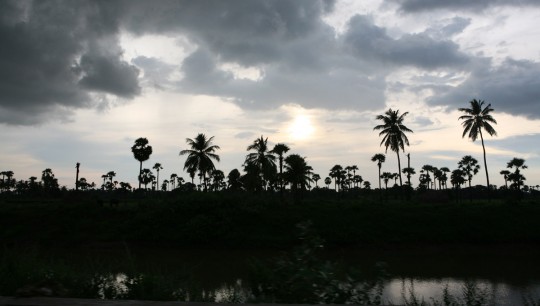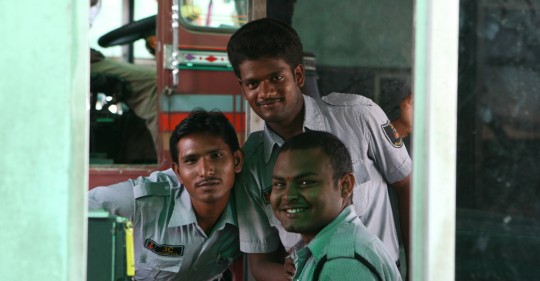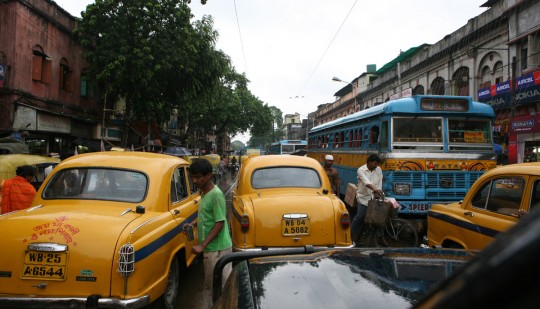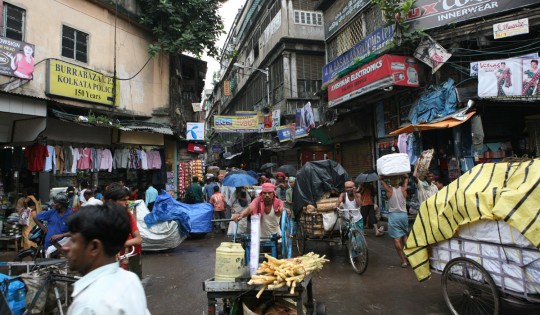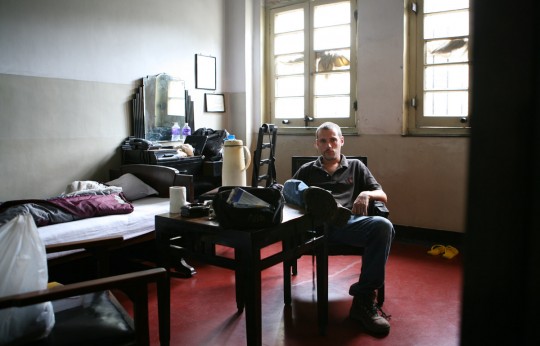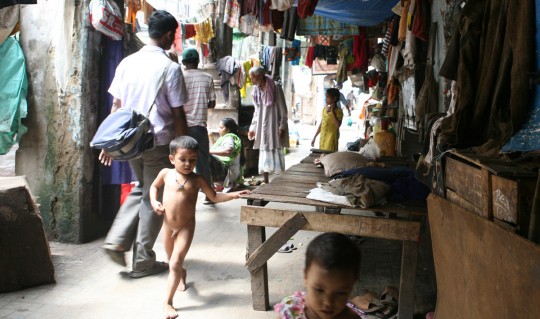
I spend few days in Calcutta after getting the Bangladesh visa. I was relieved to get this document easily, as I am now always worried about possible problems on this front. The day after I applied, I go get my passport back at the embassy where a crowd of hundred of people surrounds officials screaming names and handing passports. Finally I get mine and now can take the time to visit the city.
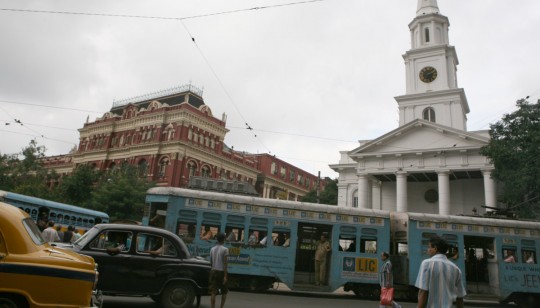
Friendly Calcutta is the thirst most populated city in India and feel even denser than Delhi or Mumbai. I take several walks in the city and can witness some nice example of British colonial architecture. Among the many stops, I see the Victoria memorial.
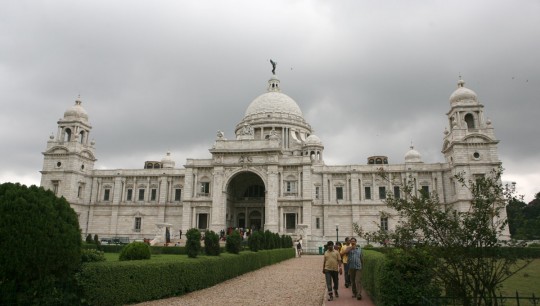
Built to commemorate the diamond jubilee of Queen Victoria in 1901, the construction finished only twenty years after her death. The white marble of the building and its dome is a reminder of the Taj Mahal.
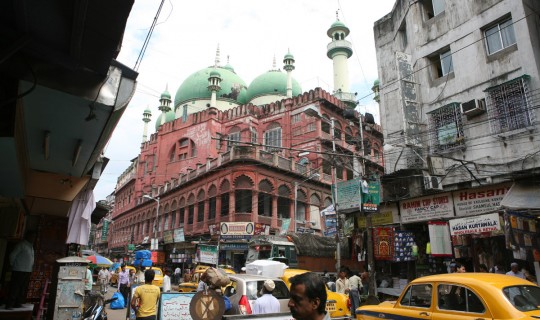
Surrounding the Memorial, the Maidan is a vast park bringing memories of New York’s Central Park to me. The 3 km-long green lung offers a little bit of space against the density of the city itself. I also visit the impressive Nakhoda mosque which offers a nice view on the surrounding streets.
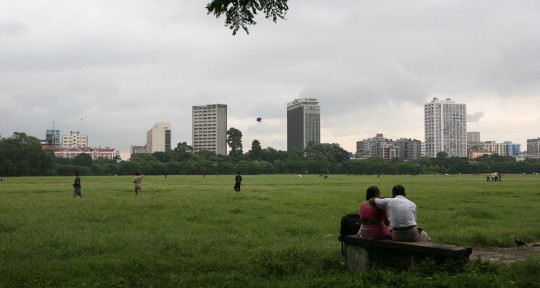
Walking around the city is exhausting and I am glad to get back to the hotel every evening and have a drink and a meal there. For lunch, I also have a lot of chances to try the best examples of Indian food available. If you are there, try Amber Essence, 11 Waterloo St which I highly recommend.
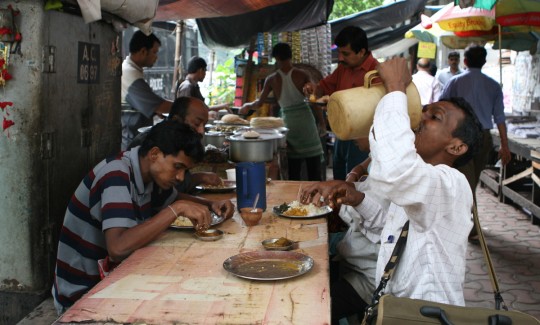
But it is time to go now, and I pack up for the next adventures. Leaving early morning, it takes me three hours to get to the Bangladesh border. Shortly before I get there, I notice that the truck begins to overheat.
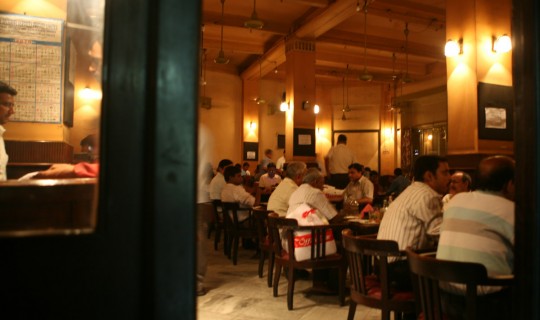
Checking out the engine, I notice I am loosing some water. I decide that the best place to take care of it will be in Dhaka, the country capital. So I continue on my way, and stop every fifty kilometers to replenish the radiator. Not much is available on the road in term of car repairs, and I absolutely need to go on and make it to Dhaka.
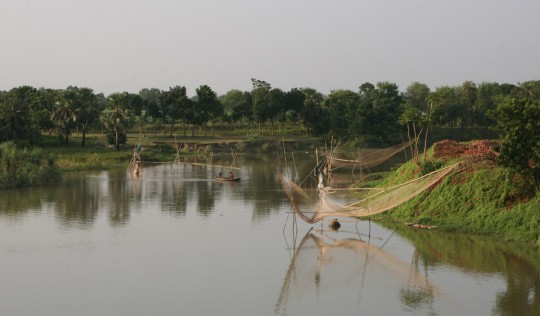
It takes me two hours to cross the border, and no major problems there. I still have three hundred kilometers to cover to get to Dhaka after that. I am pretty stressed out by the over heating problem, and increase the frequency of my stops as I go. I also put the heat on in the cabin as it provides an additional outlet to the engine heat. It is already a really hot day, and I will get a cold in the following days as a result.
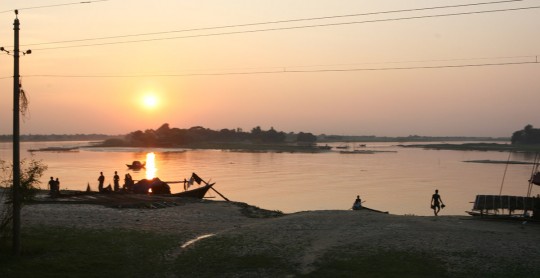
The roads are pretty good, and there’s not much traffic in the west of the country. It seems that there’s not much population either ¬– comparatively to India – in this area. I checked few maps before I left, and there’s a mystery I still need to clarify. Some maps shows a road going over the Ganges River, some other don’t show any…
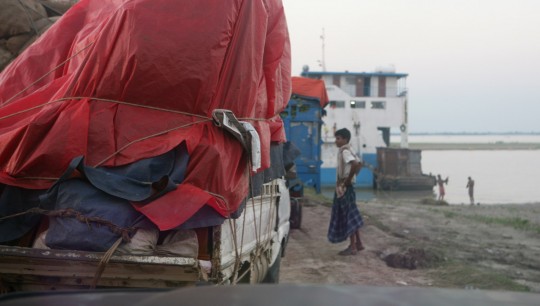
When I arrive there, of course there’s no bridge, but many boats are taking trucks in for the crossing. There’s a long wait and they sell tickets on the city prior to arrival, but because everything is so unclear and I don’t have Bangladeshi currency, I just went on.
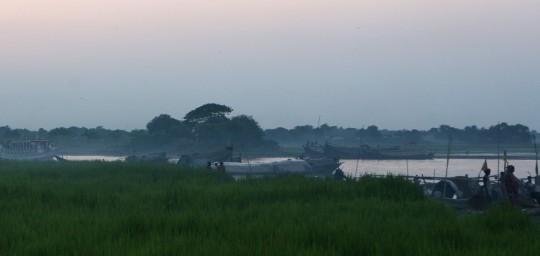
Before rolling on the boat, I speak to a guy who tells me I can’t embark without a ticket. I ask him to get his boss, and while he is away, I just roll on the boat. When they are back, there are already trucks behind me, and movements will be impossible. They don’t have any other choice than to accept my 500 Indian Rupees, which is anyway generous.
Night falls as I am crossing the river and after an hour, I attack the last portion of the trip. This will turn out to be the most difficult piece of driving I ever experienced. The traffic close to Dhaka is horrendous, and I stay stuck in traffic jam for hours. People are driving in the worst way I ever saw in the dozens of countries I crossed. The driving rules are nonexistent, and it is basically OK to bump into each other cars. I am glad I have a good front bumper, and the rear carrier and tire on the back somehow attenuate the shocks. It is just as being in another world, and I just turn up the volume of the stereo as a bicycle crash on my side and I carve a large hole in the flank of a bus with my front bumper. Nobody cares, nobody stops. On the other side of the street, a bus driver looses control of its vehicle. The 40 passengers fall from a bridge into a deep river. Most of them will die, as I will read in the newspaper the following day.
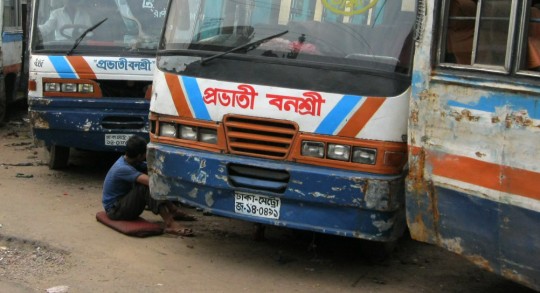
I am exhausted when I arrive in Old Dhaka, and it still takes me a little bit to find a hotel where I can park the truck. I also locate an ATM and I am glad to have at least some cash in the pocket. I will spend the next few days at the “Hotel Royal Palace” where I get a non-AC room for US$15 a day. I will experience frequent power outage as I am in the country so I know not to count on the AC. Or on hot showers.
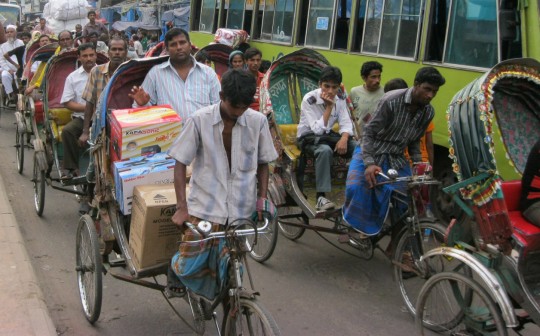
The following day, I decide it is time to take care of the truck, and I find a shop close to the hotel. I spend twelve hours there as there are many things to fix. There are seven holes in the radiator, and I have to bring it to an aluminum welder (US$12). Someone looks into the AC system which is down since Iran. A guy fixes the diverse cosmetic damages caused by the crazy driving of yesterday (US$4). Another man fixes the truck corner lenses which I broke in the accident in Honduras. It is amazing how he does that. With knives heated on a kerosene fire, he cuts the old plastic lenses, and mold a new one to replace it (US$ 5). The whole day I supervise the work and have many cup of tea with the boss of the shop. Bangladesh seems to be a good place to fix your car. Let’s see how long it last.
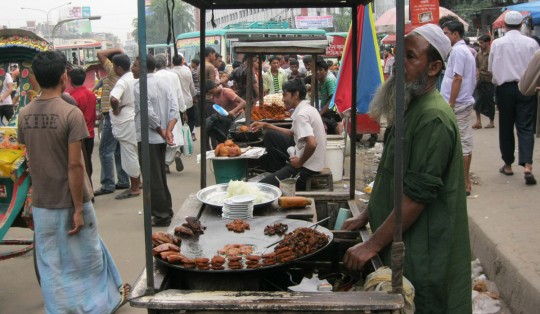
The days after all this work is done, I spend time visiting Old Dhaka. The major problem is this crazy never-ending traffic jam which makes every movement very difficult. Going anywhere would take hours, even on a Tuk-Tuk, as the traffic is so dense they can’t even go through. So I stick to destinations I can make by foot. I am able to buy some clothes so I can look like a normal human being when I go speak to customs officials. I still drag the same clothes from the beginning of the trip, and some of them are in really bad shape. On the sidewalk of the city, it is possible to buy all kind of U.S. brand-name clothes, mostly overruns from the city factories.
Lastly, I visit the customs authorities of the city to get information about my car shipment to Southeast Asia. People are very nice there, and I leave the building with the cell phone number of a very high-ranked officer, which should help when I am in Chittagong doing the shipping paperwork. This is my next destination. After I pack the car for this other bit of travel, I will come back to Dhaka and spend a little bit more time here.
